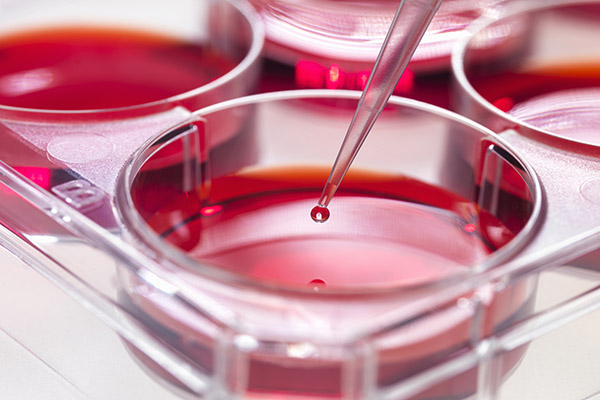
By Christopher White, The Tablet’s National Correspondent
Last month, the federal government implemented a new ban on using fetal tissue for research — a move praised by U.S. Catholic leaders.
Yet while the church has long opposed using fetal tissue for research, as it is often derived from abortions, many Catholics are largely unaware that the church supports the use of umbilical cord blood, which is rich in stem cells and has proven effective in many therapies.
Stem cells are special human cells, which can be developed into many types of cells. In 2001, President George W. Bush banned federal funding for embryonic stem cell research — a move supported by Catholic leaders — as it required the destruction of a human embryo.
Among the ethically acceptable alternatives supported by the church is that of adult stem cell research and using cord blood stem cell transplants, which has proven to be the best way of treating leukemia, sickle cell anemia, Hodgkin lymphoma and a range of other diseases.
In its 2000 document, “Declaration on the Production and the Scientific and Therapeutic use of Human Embryonic Stem Cells,” the church noted that such a practice offers “a more reasonable and human method for making correct and sound progress in this new field of research and in the therapeutic applications which it promises.”
“These applications are undoubtedly a source of great hope for a significant number of suffering people,” the document noted.
Five years later, Cardinal William Keeler, who was then chairman of the United States Conference of Catholic Bishops (USCCB), echoed those words and called for more federal funding to develop a nationwide bank for umbilical cord blood cells.
“Umbilical cord blood stem cells have successfully treated thousands of patients with dozens of diseases,” Cardinal Keeler said.
“They also exhibit properties once associated chiefly with embryonic stem cells: They grow rapidly in culture, producing enough cells to be clinically useful in both children and adults; they can treat patients who are not an exact genetic match, without being rejected as foreign tissue; and they seem able to produce a wide array of different cell types.
“What is preventing far broader use of umbilical cord blood stem cells is not an ethical concern, or any lack of evidence of clinical benefits, but simply a lack of funding and access,” he lamented at the time.
Jennifer Lahl, a pediatric nurse for more than 20 years and president of the California-based Center for Bioethics and Culture, described the process for The Tablet.
“When a baby is born in the hospital delivery room, the umbilical cord blood, which is rich in stem cells, is extracted and saved in a Cord Blood Bank until it is needed to treat a patient,” Lahl said.
“Parents can make the decision to do ‘private’ cord blood banking to save the stem cells for use in their own family, but it is more often recommended to store the cord blood stem cells in a public bank, similar to our public blood banks. This makes the stems cells available to anyone who is a match and needs a stem cell transplant,” she continued.
“Cord blood stem cells are a wonderful resource that should not be tossed out after the delivery of a baby, but saved in order to one day save a life,” she added.
Charles Camosy, a theology professor at Fordham University who specializes in medical ethics, noted that the Catholic Church has been a leading proponent of the use of cord blood and has even led the way in working with secular medical institutions to explore their potential.
“The Catholic Church has been enthusiastically in support of stem cell research that does not involve embryo-destruction for many years now,” he told The Tablet. “Indeed, the Vatican has even formally partnered with companies like NeoStem, a U.S.-based biopharmaceutical firm, to see what adult stem cells can do to aid vulnerable sick and disabled people. It turns out, quite a bit. Many therapies have been produced via adult stem cells — as well as stem cells from the amniotic fluid of pregnancy. In some cases, it has literally made the blind see.”
Yet while developments have offered great promise, he cautioned to carefully discern which companies to use when engaging in treatment.
“One should be careful not to be scammed by companies offering to freeze cord blood promising more than can be delivered,” he advised. “While we still may find new and even dramatic therapies from cord blood stem cells, much of the work has yet to be done.”
In 2011, when the Vatican announced its partnership with NeoStem, CEO Dr. Robin Smith said such a partnership offered a way to “alleviate human suffering by unlocking the healing power of the human body.”
“Most importantly,” she added, “we are able to do all this without destroying another human life.”
